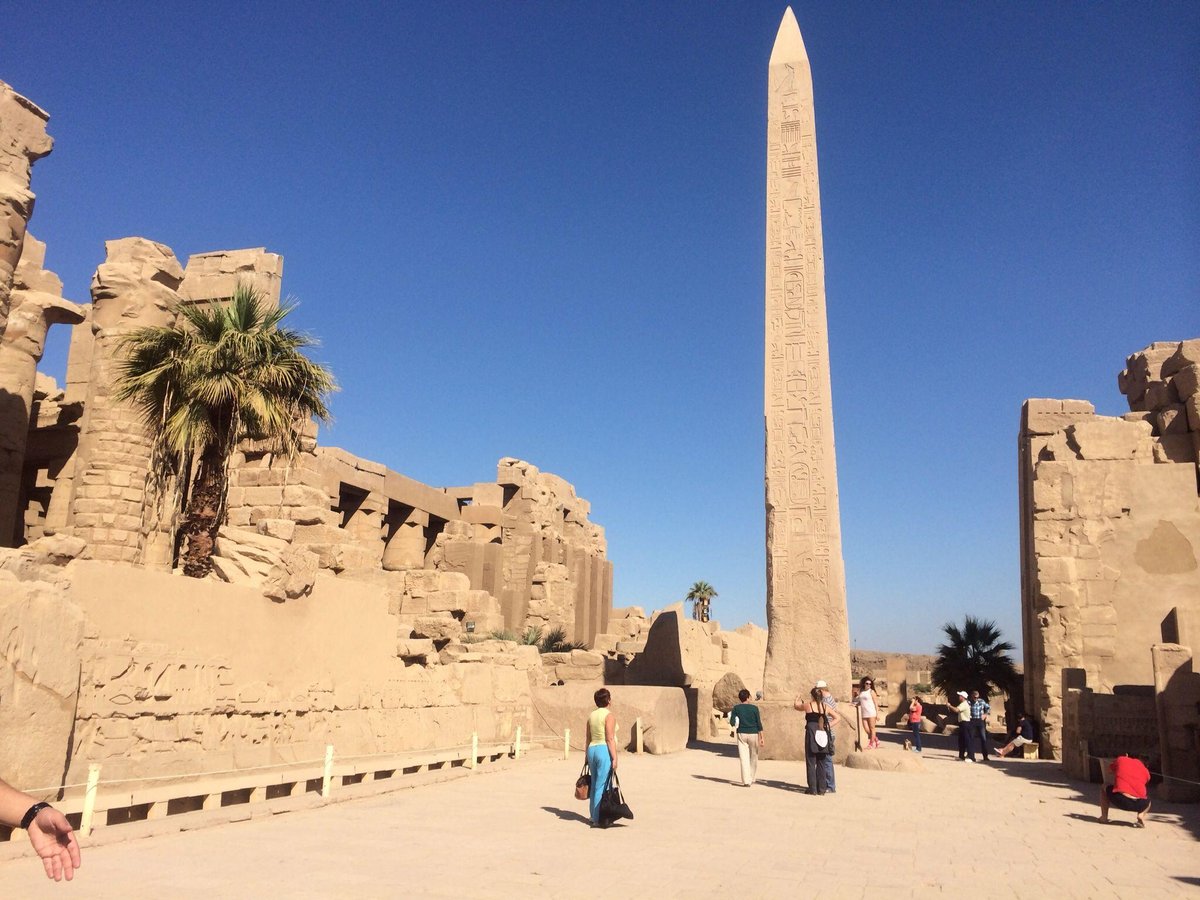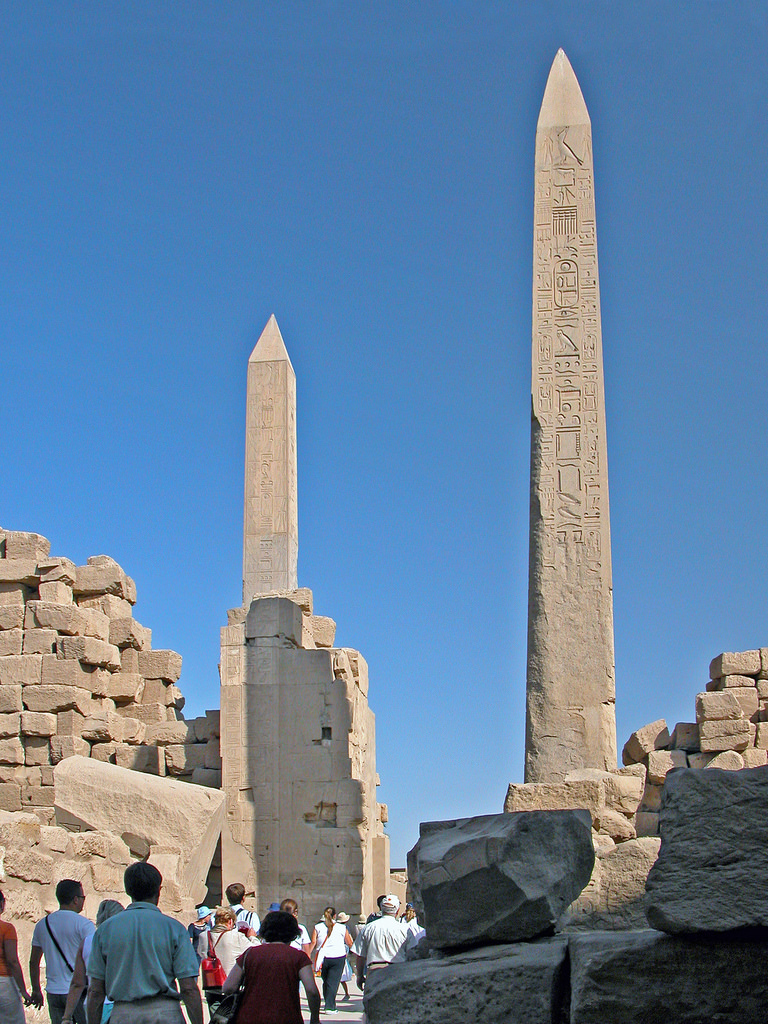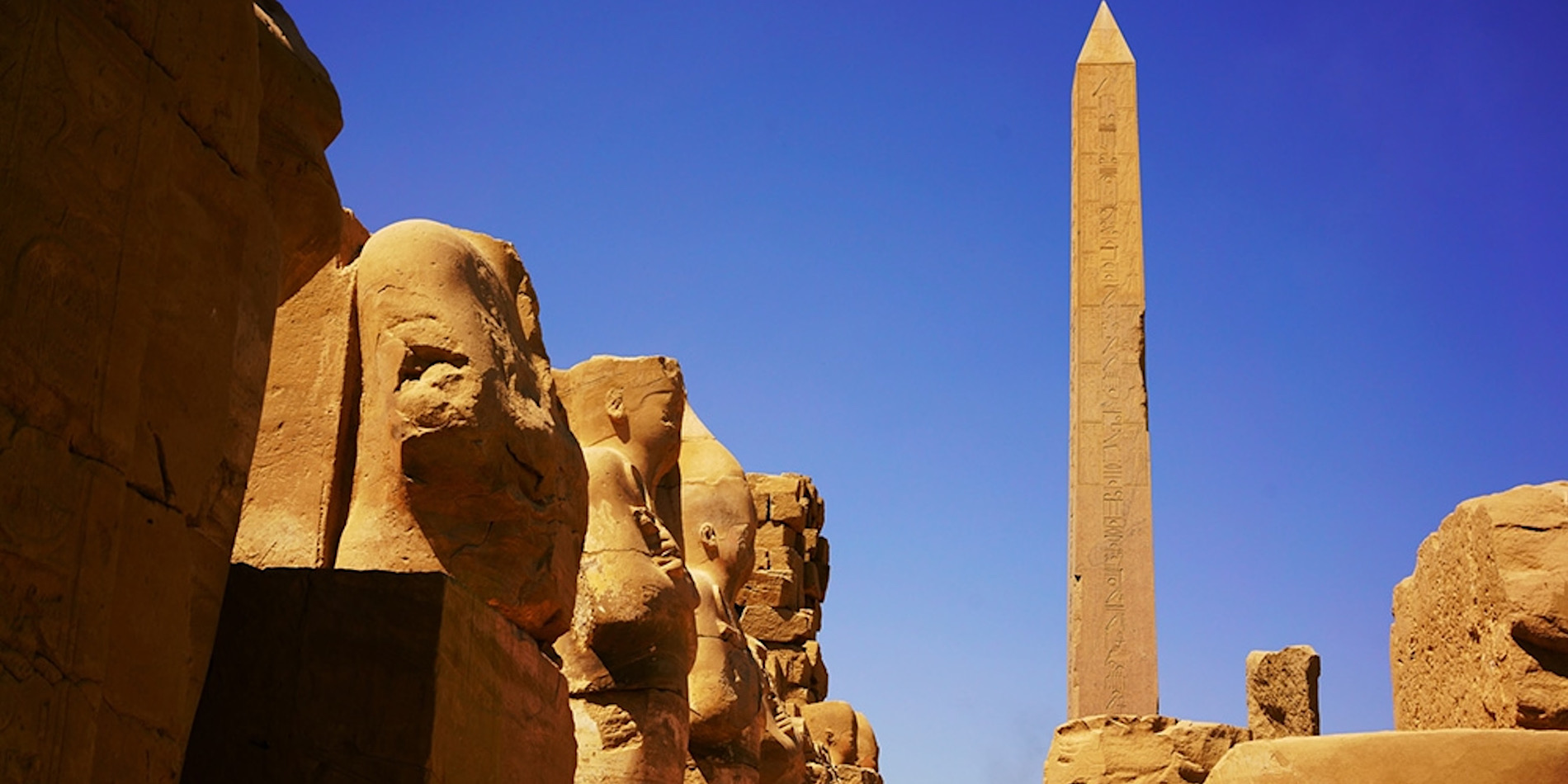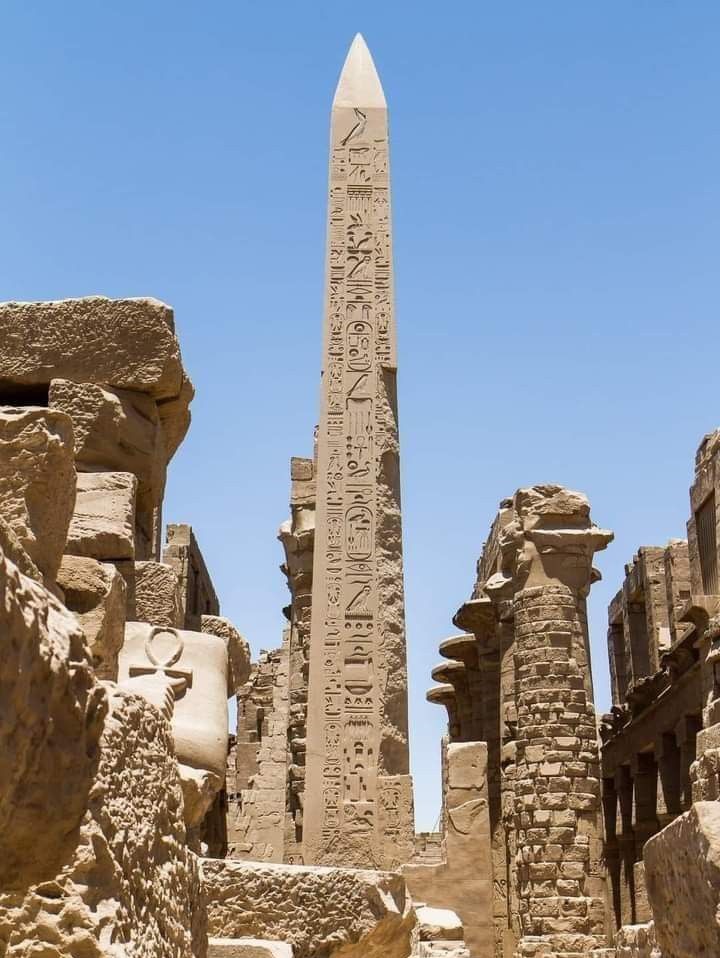Nestled within the magnificent Karnak Temple Complex in Luxor, Egypt, the Obelisk of Thutmose I stands as a timeless symbol of ancient Egyptian ingenuity, spirituality, and ambition. This towering granite structure, measuring 21.7 meters in height and weighing an astounding 143 tons, reflects the dedication of a civilization that sought to honor its gods and immortalize its rulers.
Historical Significance and Construction
Erected during the reign of Pharaoh Thutmose I (1506–1493 BC), this obelisk was a monumental offering to Amun-Ra, the sun god and central deity of the New Kingdom pantheon. Its inscriptions—though worn by time—once proclaimed the king’s divine authority and earthly achievements, ensuring his legacy endured for eternity.

The obelisk was meticulously hewn from a single block of granite sourced from the Aswan quarries, located over 200 kilometers to the south. The transportation and erection of such a massive structure required unparalleled engineering ingenuity. It is believed that the ancient Egyptians utilized sledges, lubricated tracks, and the Nile’s seasonal flooding to maneuver the obelisk into position.
Spiritual and Symbolic Importance
Obelisks were more than monumental structures; they were deeply rooted in Egyptian cosmology and religious practices. Their tapering form, crowned by a pyramidion (a small pyramid-shaped capstone), symbolized the rays of the sun descending to earth, reinforcing the pharaoh’s role as a divine intermediary.

Positioned strategically within temple complexes, obelisks like this one aligned with celestial events, particularly the rising sun. This alignment underscored their role in religious rituals, serving as focal points for worship and channels for divine energy. The gold or electrum-covered pyramidion, now long lost, would have brilliantly reflected sunlight, creating a dazzling spectacle that connected the heavens and earth.
The Obelisk Today
Despite millennia of exposure to the elements, the Obelisk of Thutmose I remains a powerful symbol of Egypt’s New Kingdom era. Its imposing presence and intricate craftsmanship continue to captivate visitors to Karnak Temple, sparking awe and admiration for the civilization that created it.

Though the vibrant paint and gleaming capstone are gone, the obelisk stands as a resilient testament to the artistic and engineering prowess of the ancient Egyptians. It invites modern onlookers to imagine its original splendor and the ceremonies it once witnessed.
The Broader Legacy of Karnak’s Obelisks
The Obelisk of Thutmose I is one of several obelisks that graced the Karnak Temple Complex, each bearing witness to the ambitions of Egypt’s pharaohs. Among them is the Obelisk of Hatshepsut, the tallest surviving ancient obelisk, which demonstrates the continuity of royal devotion within Thutmose I’s lineage.

Together, these obelisks contribute to Karnak’s status as one of the most impressive religious complexes in human history. They represent the convergence of art, religion, and engineering, showcasing the sophistication of a civilization whose influence resonates even today.
An Eternal Monument
The Obelisk of Thutmose I is more than a relic; it is a bridge to the past, offering insights into the spiritual beliefs, technical capabilities, and artistic achievements of ancient Egypt. Its towering presence amidst the grandeur of Karnak Temple ensures that the legacy of Pharaoh Thutmose I—and the civilization he ruled—remains an enduring source of wonder and inspiration.

